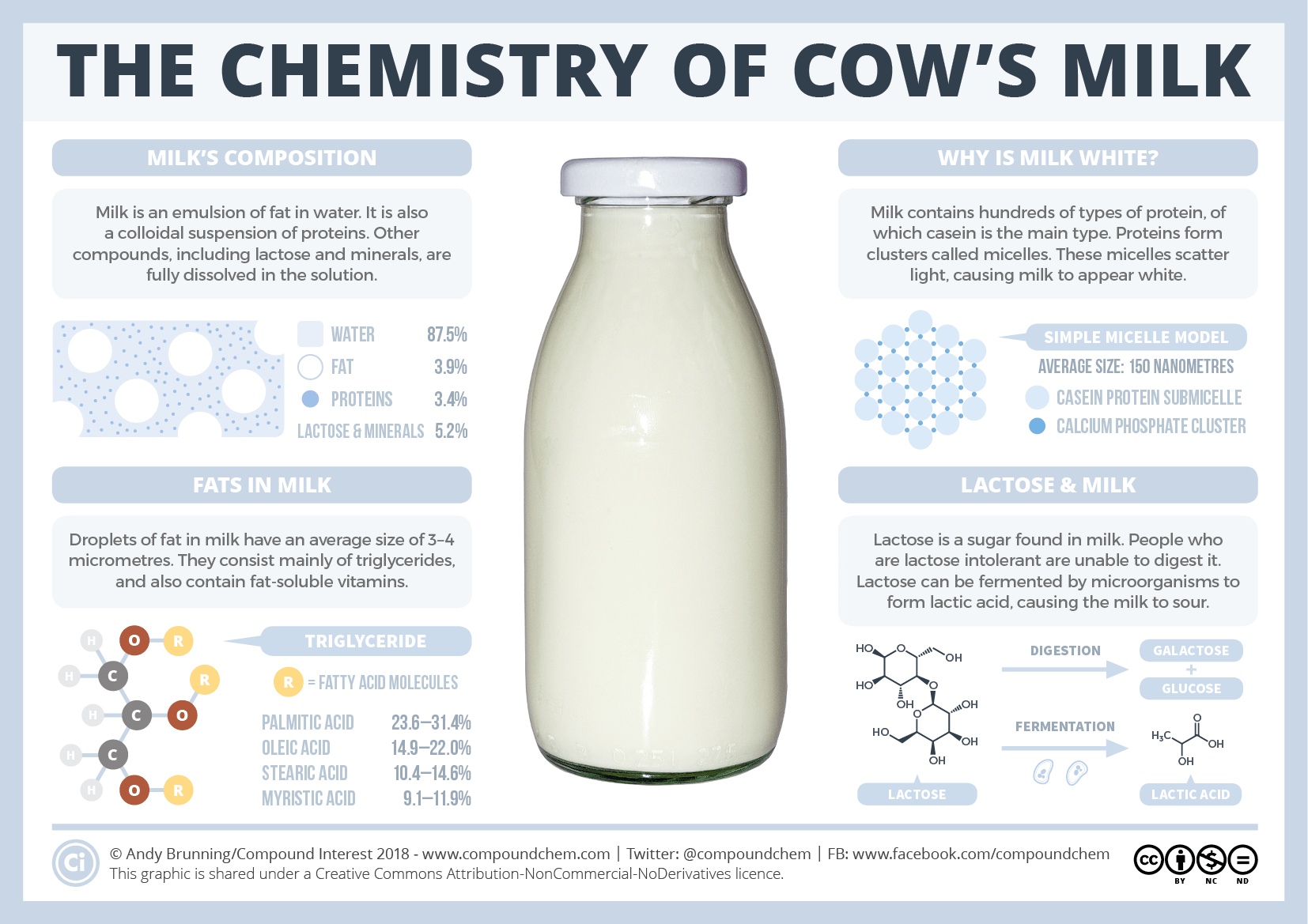
Milk is a complex mixture of Water, fat, proteins, minerals and other compounds. As fats and water don’t mix well, fat and water form an emulsion in milk.
Triglycerides make up the fats in milk. These are molecules with a glycerol backbone and three fatty acid chains attached. Most common fatty acids in milk are palmitic, oleic, stearic, and myristic acids. The variations in the amounts of these acids are a consequence of what cows eat.
Proteins are another important component in milk that gives milk its white appearance. Casein is the main type of protein among hundreds of others.
In milk, proteins cluster together to form structures called micelles. They grow from small clusters of calcium phosphate, which held the proteins together. The micelles are on average about 150 nanometres in diameter, and are able to scatter light that hits them. This scattering gives the milk its white colour.
Other compounds found dissolved in milk are vitamins, minerals and a sugar called lactose. Lactose is a sugar found only in milk and dairy products.

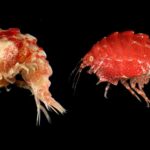
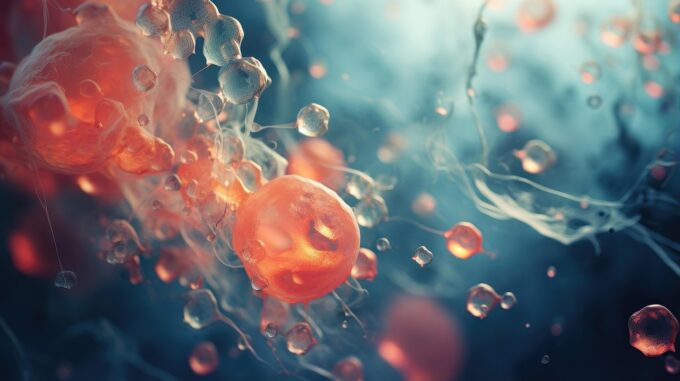

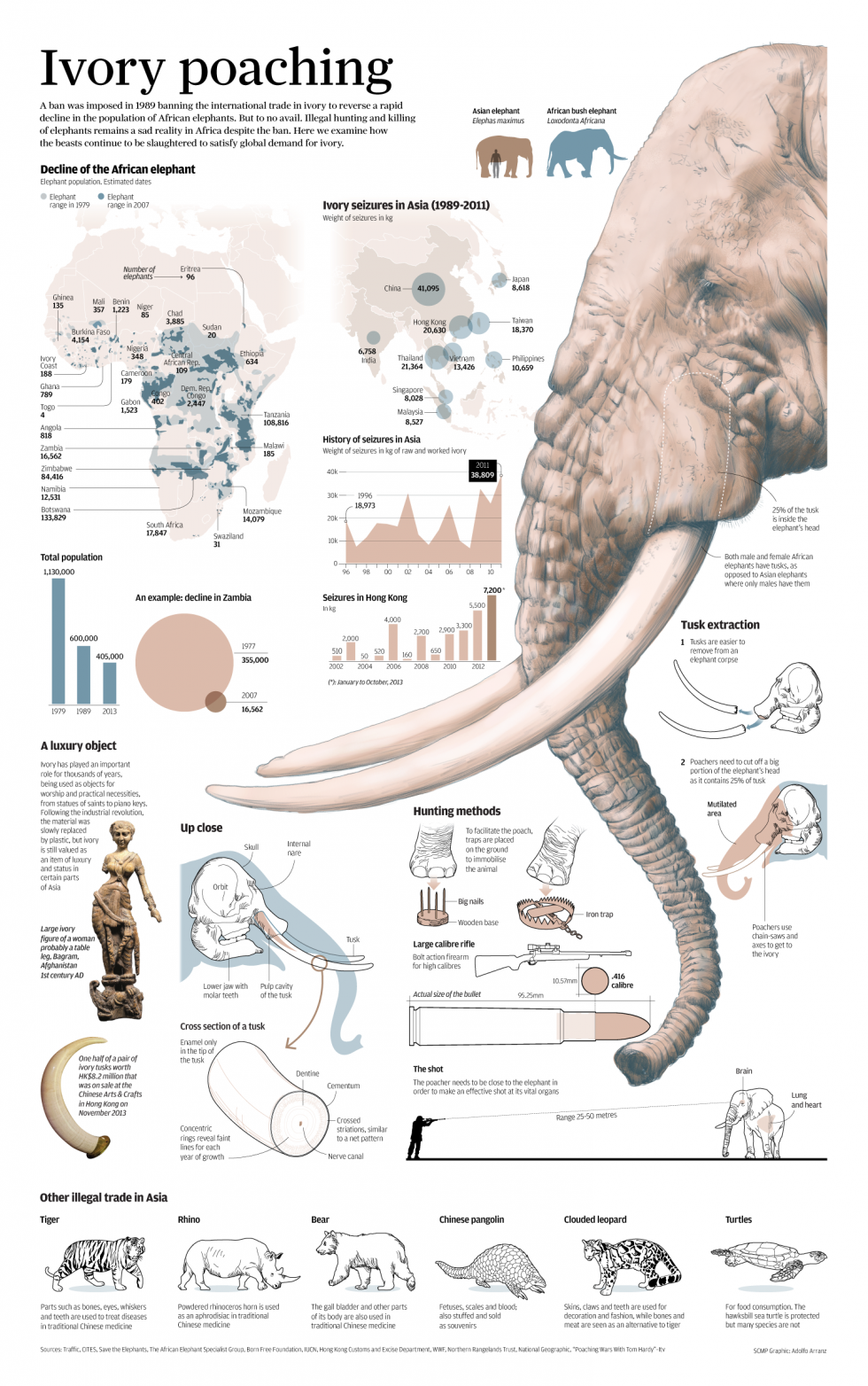
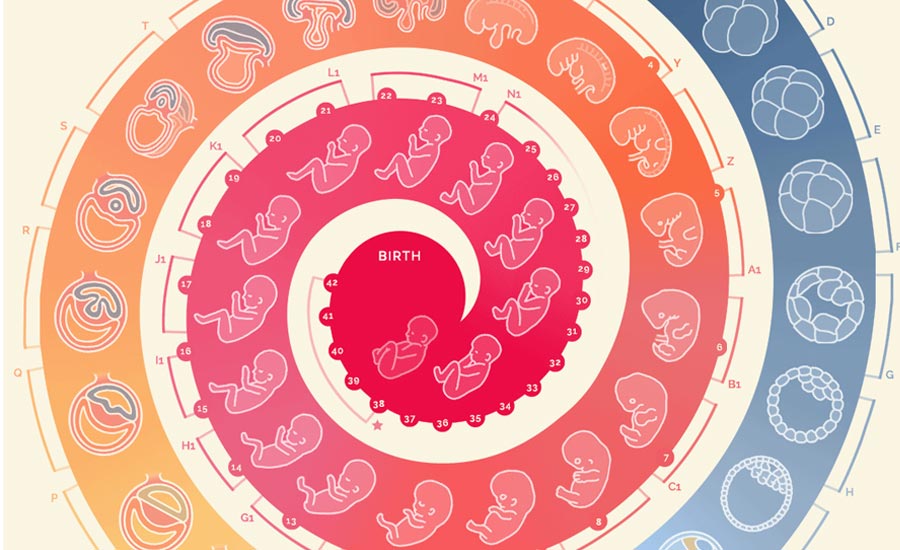
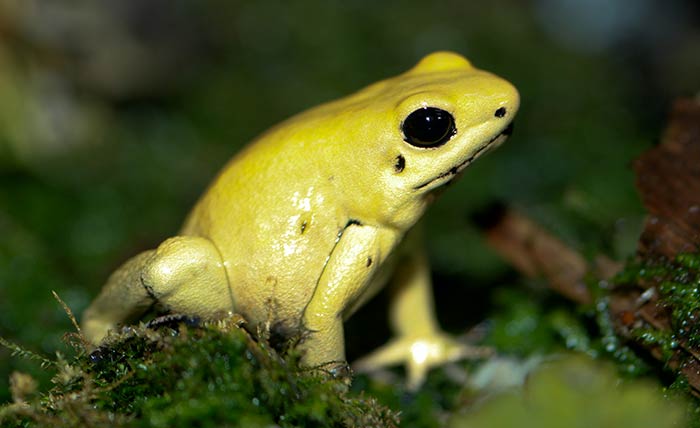


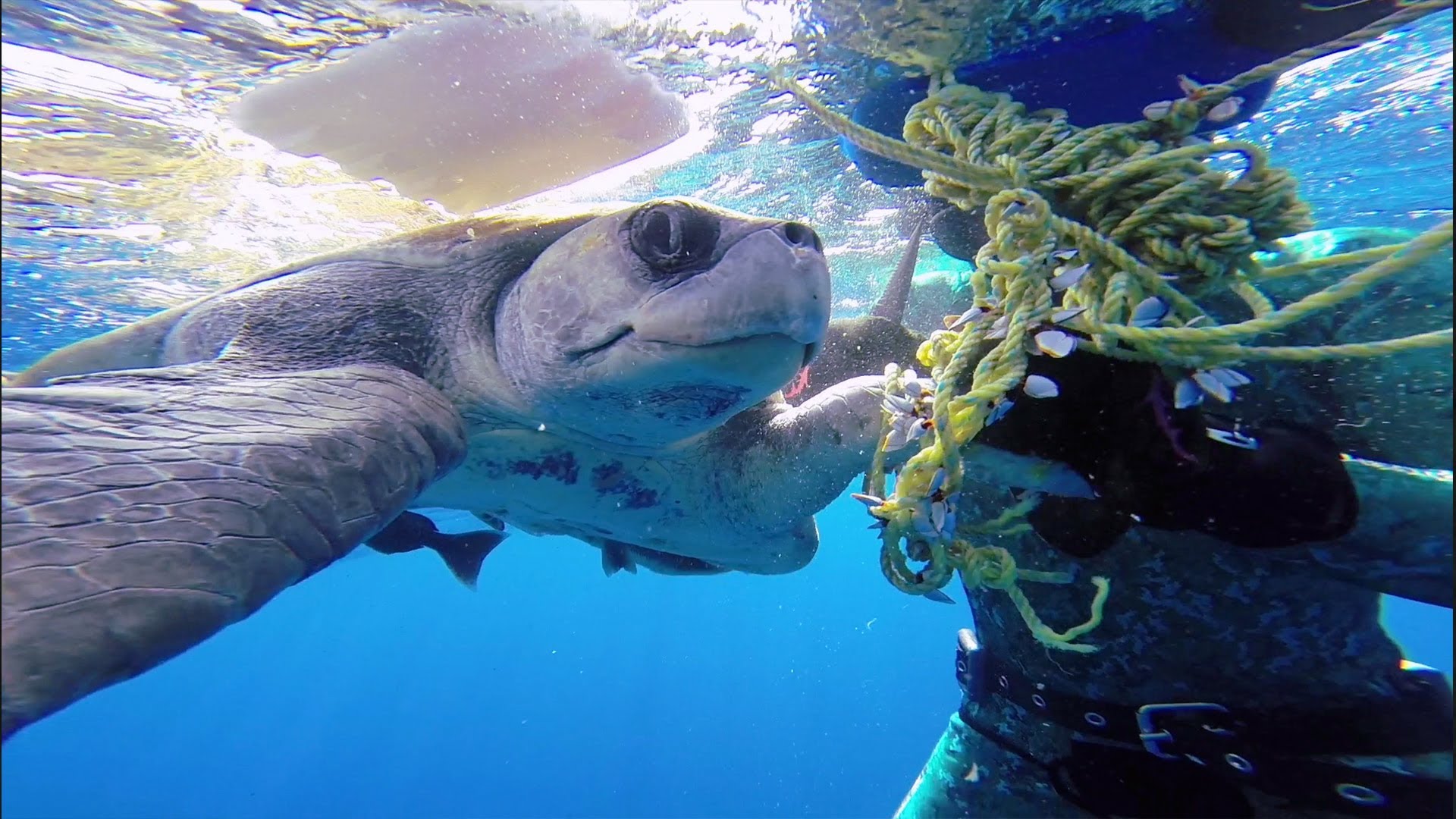
Leave a comment